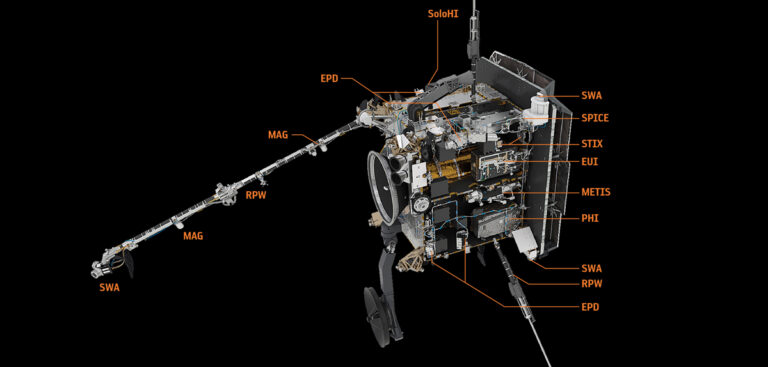The European Space Agency’s sun exploring spacecraft, Solar Orbiter, has sent its first measurements, confirming to scientists that its magnetometer is in good shape.
The UK-built Solar Orbiter was launched on Monday 10th February carrying 10 scientific instruments, four of which measure properties of the environment around the spacecraft, especially electromagnetic characteristics of the solar wind.
Ground controllers at the European Space Operations Centre in Darmstadt, Germany, switched on the magnetometer’s two sensors 21 hours after lift-off.
The instrument recorded data before, during and after the boom’s deployment, allowing scientists to understand the influence of the spacecraft on measurements in space.
Tim Horbury of Imperial College London and principal investigator for the magnetometer instrument, said, “The data we received shows how the magnetic field decreases from the vicinity of the spacecraft to where the instruments are actually deployed. This is an independent confirmation that the boom actually deployed and that the instruments will indeed provide accurate scientific measurements in the future.”
The titanium/carbon fiber boom was stretched out over a 30-minute period on Wednesday, almost three days after lift-off, and the scientists could observe the level of magnetic field decrease by about one order of magnitude.
At the beginning they saw mostly the magnetic field of the spacecraft, but at the end they got their first glimpse of the significantly weaker magnetic field in the surrounding environment.
Matthieu Kretzschmar of Laboratoire de Physique et Chimie de l’Environnement et de l’Espace in Orleans, France, said, “Measuring before, during, and after the boom deployment helps us to identify and characterize signals that are not linked to the solar wind, such as perturbations coming from the spacecraft platform and other instruments.”



